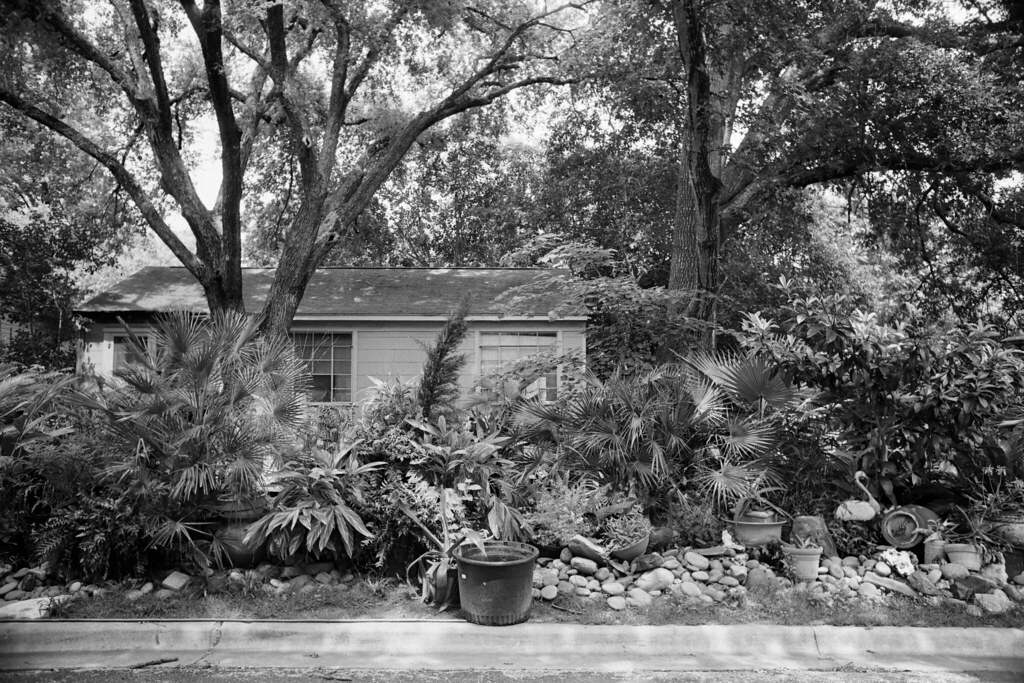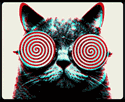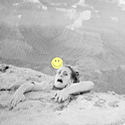windex posted:(Also, I listen to good advice but lets face it, my original question was about underexposed/pushed Portra 400 fogging and nobody said poo poo down that topic so Portra 400 is well known for its gigantic dynamic range. If you shot it as 1600 or 3200, by accident or not, just have it developed normally as if you shot it at 400, and your negatives will be perfectly fine.
|
|
|
|
|

|
| # ? May 11, 2024 19:58 |
|
windex posted:That was never even a discussion topic. :P Yes you can push portra 400 to 1600. It pushes better than 800 does to 1600. I usually ask the lab to push process my film but you can just underexpose and recover in scanning. Portra is black magic. windex posted:but I just read something online that indicates you should err to overexposed with C41 negative process films. Look at those pictures. That is why you expose for the shadows with negative process films (unlike digital or slide film).
|
|
|
|
I find that you need a good scanner to get anything good out of underexposed portra. I did some 400 @ 1600 a few months ago and there was a lot of digital grain because it was struggling to get anything useful out of the negative. My scanner is from 2004 so that probably makes it worse. A V600 would probably do way better.
|
|
|
|
find a darkroom and print your photos and scan the prints, windex
|
|
|
|
Sweet, okay. Not going to worry about my lovely exposures till they get back from the lab. Thanks! Also, the plustek is a 40MP scanner that makes three (four to six if doing IR damage recovery) 40MP passes (two at 90 degrees, inverse, to be more consistent with projection or something) - as long as the colors aren't totally hosed by fogging, it'll recover. I have shot trix so underexposed in poo poo light that it looks almost totally clear on the negative and gotten usable images. I've just not used the new Portra emulsions or the 400, ever, and suddenly got paranoid I lost a bunch of awesome photos from Kamakura over the weekend.
|
|
|
|
Stop saying fogging you goddamn idiot, underexposure doesn't cause fogging. In fact stop saying anything. You ask obtuse questions and then quibble over the advice given to you by people who are trying to help you despite the fact that no one here likes you. You should stop shooting film, just shoot digital and VSCO it since you can't seem to get even the simplest concepts down or accept advice in anyway.
|
|
|
|
windex posted:That was never even a discussion topic. :P If your film is fogged it's because you're an idiot and exposed it to daylight, or because your lab hosed up a step. Where did you get the idea that it has anything to do with underexposure or pushing?
|
|
|
|
BANME.sh posted:I find that you need a good scanner to get anything good out of underexposed portra. I did some 400 @ 1600 a few months ago and there was a lot of digital grain because it was struggling to get anything useful out of the negative. My scanner is from 2004 so that probably makes it worse. A V600 would probably do way better. Why does it seem like everyone likes to recommend the epson v-series scanners? I bought one and it's pretty poo poo. (It's was 550, but still, I don't think there's that much difference?) Example: V550:  Secret mystery scanning method:  Maybe I'm missing something in those 50 extra v's that I didn't pay for? Or is resolution just not as much of a priority as DMAX to most of the users who recommend it?
|
|
|
|
I don't think it's the v series so much as epson in general caring about making a decent flatbed film scanner. I've used a couple canon canoscan models and they where both garbage. My scanner is an epson 4870, so it's pre-v series but still really good in terms of sharpness.
|
|
|
|
SMERSH Mouth posted:Why does it seem like everyone likes to recommend the epson v-series scanners? I bought one and it's pretty poo poo. (It's was 550, but still, I don't think there's that much difference?) Similar experience for me. It's great that I can scan 12 frames at once, but the quality just isn't there. It probably has to do with those film holders and film flatness. Been having better results with my dslr and a macro lens.
|
|
|
|
SMERSH Mouth posted:Why does it seem like everyone likes to recommend the epson v-series scanners? I bought one and it's pretty poo poo. (It's was 550, but still, I don't think there's that much difference?) Get a V700, at least. Or 'scan' it with a DSLR.
|
|
|
|
If you're just scanning 35mm I'd recommend a dedicated film scanner. Flat beds aren't going to give you great results.
|
|
|
|
Yea flatbeds are good for 120 and up. 35mm scans on my old v500 (this one had the better scanning holders) and my v700 are pretty bad.
|
|
|
|
The v500-600 are good for the money if you are doing 120 but they aren't good compared to the more expensive v700.
|
|
|
|
8th-snype posted:Stop saying fogging you goddamn idiot, underexposure doesn't cause fogging. In fact stop saying anything. You ask obtuse questions and then quibble over the advice given to you by people who are trying to help you despite the fact that no one here likes you. You should stop shooting film, just shoot digital and VSCO it since you can't seem to get even the simplest concepts down or accept advice in anyway. I only post to keep your alive. I am saving your life by making you furiously type words, preventing your arteries from finally closing shut. MrBlandAverage posted:If your film is fogged it's because you're an idiot and exposed it to daylight, or because your lab hosed up a step. Where did you get the idea that it has anything to do with underexposure or pushing? When pushing B&W for example there's a bit of haze/fog on the negative vs a shorter development time, other idiots on the internet implied with C-41 this effect was so much stronger that it hosed over underexposed shots, and I have never tried pushing C-41. windex fucked around with this message at 05:20 on Jul 5, 2016 |
|
|
|
windex posted:
No, pushing film can accentuate any base fog that is present but it does not cause it. Seriously go read a simple book on film development, you don't know enough to understand the answers to the questions you are asking. Please just leave this thread and never come back.
|
|
|
|
8th-snype posted:No, pushing film can accentuate any base fog that is present but it does not cause it. Seriously go read a simple book on film development, you don't know enough to understand the answers to the questions you are asking. Please just leave this thread and never come back. The problem is much of the thread enjoys pretentious internet posting to provide the end result of "that is stupid, you are stupid" but most of you are forgetting the "this is why" part. My question was answered in the thread, and it wasn't even that painful. Generally when that happens I stop posting, though I do enjoy replying to your lovingly constructed posts. Along that line, Ansel Adams was effectively the world's greatest experimental photographer. I read The Negative over 15? years ago, and it is mostly documentation of his own experiences in trial and error, and is based upon personal experience and a fuckton of mistakes. When thread links to The Negative in response to my question, unfortunately it's not that helpful when discussing specific processes or films. I lacked experience with something specific and asked thread to fill in the blank. The only reason I even had a concern is because Kodak has pretty much moved their entire line of films to massively cost reduced versions since I last shot film and I have had a negative experience with 400TX, accumulated by trial and error. I fixed "my process" by changing my behavior with the camera, but your focus has been on finding a fault in the rest of the process just so you can whine more about my posting. There is no right or wrong way to do photography, there are only acceptable outcomes and unacceptable outcomes, and those vary by the photographer. I enjoy responding to your love letters, please send more.
|
|
|
|
to play devil's advocate, and being drunk, i'm just gonna say i seem to remember my hp5 having a somewhat slightly darker tone in the unexposed area,s including the sprocket and frame markings etc when i pushed my hp5 to 3200 in hc-110, xtol, or rodinal. idk if this osmething worng i'm doing in the developing or if i'ts a natural artifcat of developing for way too long buut i think it might afctually be a thing with some b&w films
|
|
|
|
like i cna see if a film was very very very slightly foggy leaving is in the hc-110 for 48 minutes or wahtever i did would bring that out where it owulnd a t400 or 800
|
|
|
|
Your question was answered, you continued to be wilfully ignorant, hence you were pointed to read The Negative. You continuously demonstrated a very poor understanding of the basics of what you were asking, while simultaneously ignoring any real advice. Hence, you were met with hostility. Your claims of experience with film don't match the stupidity of your posts.
|
|
|
|
Spedman posted:Your question was answered, you continued to be wilfully ignorant, hence you were pointed to read The Negative. You continuously demonstrated a very poor understanding of the basics of what you were asking, while simultaneously ignoring any real advice. Hence, you were met with hostility. You answered with an assumption implying all films are equal. It wasn't that helpful: My experience is contradictory to the statement in a few places. I also didn't actually ignore your advice - I made a decision to change my default behavior to test it out, then the thread derailed on my explaination of why I found your statement contradictory.
|
|
|
|
windex posted:You answered with an assumption implying all films are equal. It wasn't that helpful: My experience is contradictory to the statement in a few places. I also didn't actually ignore your advice - I made a decision to change my default behavior to test it out, then the thread derailed on my explaination of why I found your statement contradictory. Don't explain, just shut the gently caress up. Your process is bad. We link to the negative because unlike you Ansel Adams paid attention in school and had a bare minimum understanding of the science behind developing film. The metering and developing process described in that book is a good baseline so you don't do things like shoot 40 rolls of film and gently caress it up before asking for help. Then you spend 3 pages telling anyone trying to help you why you don't believe them despite the fact that you don't know what the gently caress you are doing. Film is too complicated for you, shoot box speed or shoot digital. You are a failure as a photographer and as a human being.
|
|
|
|
trgy hp5
|
|
|
|
windex posted:You answered with an assumption implying all films are equal. It wasn't that helpful: My experience is contradictory to the statement in a few places. I also didn't actually ignore your advice - I made a decision to change my default behavior to test it out, then the thread derailed on my explaination of why I found your statement contradictory. Jesus wept (1)"expose for shadows, develop for highlights" (2) follow the massive dev chart, following temp and agitation closely If you're getting blown highlights you've hosed the metering or are shooting a scene with too much dynamic range That's it. It's not that loving hard. And Tri-X in Rodinal is great:  Museum of Civilisation by Tim James, on Flickr Museum of Civilisation by Tim James, on Flickr Presidio - San Francisco by Tim James, on Flickr Presidio - San Francisco by Tim James, on Flickr
|
|
|
|
windex posted:The only reason I even had a concern is because Kodak has pretty much moved their entire line of films to massively cost reduced versions since I last shot film and I have had a negative experience with 400TX, accumulated by trial and error. What are you talking about? The last change in Tri-X at least was in 2007, from TX (or TX400) to 400TX, and the "cost savings" rumor is pure myth (Ron over at APUG has discussed it more than once). It was an update to take advantage of newer Kodak technology to get finer grain and lower environmental fallout. The 2010 Portra changes likewise incorporated the Vision technology from the cine side of the house. If you don't play well with 400TX, that's ultimately your business, but blaming it on corner-cutting Kodak beancounters smells of crazy talk.
|
|
|
|
Yond Cassius posted:What are you talking about? The last change in Tri-X at least was in 2007, from TX (or TX400) to 400TX, and the "cost savings" rumor is pure myth (Ron over at APUG has discussed it more than once). It was an update to take advantage of newer Kodak technology to get finer grain and lower environmental fallout. The 2010 Portra changes likewise incorporated the Vision technology from the cine side of the house. If you don't play well with 400TX, that's ultimately your business, but blaming it on corner-cutting Kodak beancounters smells of crazy talk. The last film I shot before this year was in late '06 / early '07. The internet as a whole whines about those changes (and I don't really keep up with APUG). The cycle of this topic is/was: I work around blowing out tri-x by underexposing known problem scenes and relying on shadow recovery (which is very good with Tri-X). Random internet people say Portra and in general C-41 films can't be treated this way or they look like rear end. I ask the film thread. Film thread insists I am a bad human and photographer because I don't want help with a problem I solved, while managing to answer my original question by reassuring me that Portra 400 has similar DR characteristics to Tri-X 400. In light of my failure as a human and photographer, being accused of crazy talk seems insignificant, really.
|
|
|
|
windex posted:When pushing B&W for example there's a bit of haze/fog on the negative vs a shorter development time lol wut windex posted:The last film I shot before this year was in late '06 / early '07. The internet as a whole whines about those changes (and I don't really keep up with APUG). The cycle of this topic is/was: I work around blowing out tri-x by underexposing known problem scenes and relying on shadow recovery (which is very good with Tri-X). Random internet people say Portra and in general C-41 films can't be treated this way or they look like rear end. I ask the film thread. Film thread insists I am a bad human and photographer because I don't want help with a problem I solved, while managing to answer my original question by reassuring me that Portra 400 has similar DR characteristics to Tri-X 400. I told you you'd ignore me when I told you why your film is low contrast  I'm looking forward to when you get good results with Portra because a lab is developing it for you and you come back and post that you did some random thing and it solved a problem that doesn't exist.
|
|
|
|
MrBlandAverage posted:lol wut The Negative ch. 4 posted:Note from the example the sequence that occurs as we proceed I am now resorting to quoting The Negative since apparently it is the bible. There is always base fog. Base fog is always worse the longer you develop. If you compare Tri-X 400 negatives developed at normal times for 400 to negatives developed at extended times for 1600, the 1600 negatives will have more fog, even in areas not exposed to light, consistently. If you pull Tri-X 400 down, you should see less fog to a miniscule degree. We tend not to care about base fog as much on B&W film, but it matters more on color films because it mutes colors - a lot. Highly diluted developer increases fog less at cost of development time. I don't really have a low contrast problem, I only underexpose when I know I am probably going to blow out the highlights relative to what my center weighted average TTL meter thinks. And, a lab develops 90% of my B&W, using the same developer, and the primary difference in the results is that the lab processed film has more streaks and scratches. C-41 is going to be handled by a different lab, so who knows what wonders I will see in the results.
|
|
|
|
You read all that and still didn't understand it.
|
|
|
|
I give up
|
|
|
|
All this reminds me that I should really start processing B&W film myself. Since I have never done it before, I will ask this thread for advice The choice of developers is rather limited where I live, so I'd like to hear some opinions on readily available developers. Basically, what is usually available are: Kodak D-76 Kodax XTOL Ilford Perceptol Ilford Microphen Ilford ID11 I'd like to hear some experiences and reccomendations. I usually shoot HP5+, Pan F and Delta Pro 100, with occasional FP4+ and Delta Pro 3200.I also have large stock of Kodak X Plus 125 and Orwo NP 15, 17, 22 and 27 (and some odds and ends, like a few rolls of Fomapan and Efke)
|
|
|
|
Doctor Bombadil posted:All this reminds me that I should really start processing B&W film myself. Since I have never done it before, I will ask this thread for advice D-76, XTOL and ID11 (Ilford's version of D76) are all general purpose developers and any would be a great place to start. I don't know anything about the other two.
|
|
|
|
Freestyle says Fujifilm is no longer going to sell Acros 4x5 in the US market. I bought 10 boxes - that should last me a good while...Spedman posted:I give up It's okay, he fixed his process.
|
|
|
|
windex posted:The last film I shot before this year was in late '06 / early '07. The internet as a whole whines about those changes (and I don't really keep up with APUG). If there's anything the Internet loves, it's whining, and the Tri-X changes gave people an excuse. People whined about the changes from HP5 to HP5+ back in the late 80s and early 90s too, and long before that, when Kodak changed the Verichrome Pan formulation in '65. The only difference was back then you were stuck listening to your local photography club or reading a couple letters in Shutterbug instead of Googling around to cherry-pick and reinforce your delusions. Quite a lot of people liked the changes; they just shut up after a while, went shooting, and shut up about it, rather than carrying on about how Kodak Ruined Things Forever. Like any change in emulsion, you had to do a little tweaking to get your best results, and a lot of people never get over being told to change. You even find people whining about the 1960 "change" in film speed (with a handful of stragglers hanging on to present day) - which was an adjustment in standards and not the film itself. Ultimately, I'm a pretty big believer in "you do you" - if you like the results you get by swallowing the canister and passing it into a tank of fixer 24 hours later, more power to you. It's your film. You paid for it. It's just important to acknowledge that your process is pretty far from standard and most people get perfectly good results from more conventional guidelines. Don't blame Kodak for cheaping out and forcing you into anything; it's just your personal weirdness shining through.
|
|
|
|
MrBlandAverage posted:Freestyle says Fujifilm is no longer going to sell Acros 4x5 in the US market. I bought 10 boxes - that should last me a good while... Are you loving kidding me I just bought this goddamn Wista
|
|
|
windex posted:I am now resorting to quoting The Negative since apparently it is the bible. There is always base fog. Base fog is always worse the longer you develop. If you compare Tri-X 400 negatives developed at normal times for 400 to negatives developed at extended times for 1600, the 1600 negatives will have more fog, even in areas not exposed to light, consistently. If you pull Tri-X 400 down, you should see less fog to a miniscule degree. We tend not to care about base fog as much on B&W film, but it matters more on color films because it mutes colors - a lot. Highly diluted developer increases fog less at cost of development time. The passage you quoted says two things regarding base fog: 1. It's so low it's insignificant, as long as the film is reasonably new and has been properly stored 2. Its strength increases as you develop the film harder Let's assume you're still worried about the Portra 400 you shot as 1600 (or whatever). If you told the lab to push it one or two stops, you hosed up, because you never needed to. If this is the case, you may get a color cast, not because of any base fog, but just because that's what can happen when you push color film. It's not like the fog gains color cast at a different rate than the rest of the negative, right? If you just have the lab develop the film at box speed, even though you shot it as 1600, then you may get some slightly thin negatives, but they are still perfectly usable if scanned (or optically printed) properly, and the colors will definitely be correct. Because you hopefully didn't tell the lab to push, point 2 above is irrelevant. And because your film is presumably fresh and stored properly, point 1 above is also irrelevant. So maybe fogging is not an issue at all?!? WOW.
|
|
|
|
|
Honest question, why are you pushing color negative film?
|
|
|
|
devil's advocate: saturation/grain/speed It would probably be easier to buy Superia 800 for all of the above though.
|
|
|
|
burzum karaoke posted:devil's advocate: saturation/grain/speed Fixed.
|
|
|
|

|
| # ? May 11, 2024 19:58 |
|
Doctor Bombadil posted:All this reminds me that I should really start processing B&W film myself. Since I have never done it before, I will ask this thread for advice I don't have huge amounts of experience with any of these developers but I feel obligated to point out that I'm not a fan of XTOL, simply because the only way to tell it's exhausted is to ruin a roll of film and apparently it can happen rather quickly.
|
|
|




























